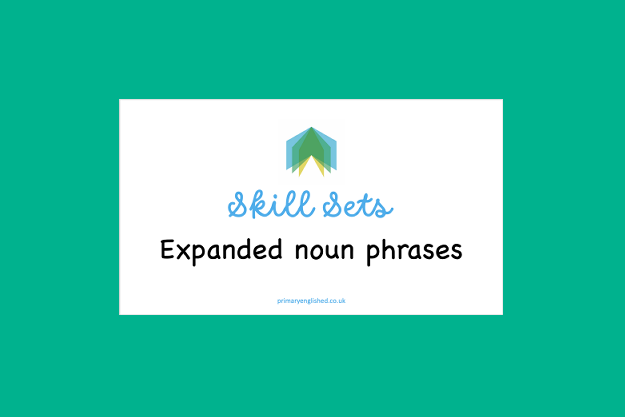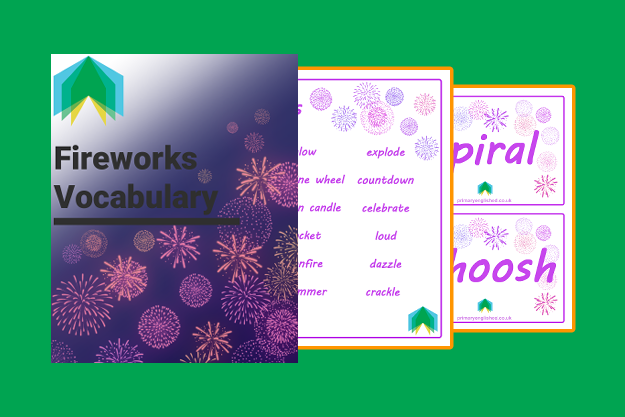Quick Tips for Grammar: Expanded Noun Phrases
The 2014 National Curriculum asks that children use expanded noun phrases from Year 2 onwards:
Expanded noun phrases for description and specification [for example, the blue butterfly, plain flour, the man in the moon] English Appendix 2: Vocabulary, grammar and punctuation (National Curriculum p.75)
Children then revisit and extend this learning in Year 4:
Noun phrases expanded by the addition of modifying adjectives, nouns and preposition phrases (e.g. the teacher expanded to: the strict maths teacher with curly hair) English Appendix 2: Vocabulary, grammar and punctuation (National Curriculum p.77)
And it is referred to again in the Year 5 and Year 6 programme of study:
Using expanded noun phrases to convey complicated information concisely. National Curriculum p.48 Writing – vocabulary, grammar and punctuation
With three separate references across the national curriculum (and bearing in mind the reminder from the foreword to Appendix 2: Vocabulary, grammar and punctuation that these concepts should be revisited after initial teaching) it is clear that expanded noun phrases constitute a significant part of the Key Stage 1 and Key Stage 2 grammar and writing requirements. In this article, we take a walk through expanded noun phrases, think about what they are, and consider some ways to teach this key aspect of grammar.
Expanding before the noun
Starting with a noun
There’s no need to name parts of grammar such as adjectives, determiners and nouns in Year 1 but it’s likely that nouns and adjectives will be discussed with children at some point over this first year in Key Stage 1 as teachers encourage children to make their sentence writing more interesting.
This means that sentences such as I like apples. and We ate pizza. can be amended to I like green apples. and We ate yummy pizza.
Top Tip:
Use books such as Red Rockets and Rainbow Jelly by Sue Heap and Nick Sharratt to offer children simple models to copy and use to create their own sentences that include simple noun phrases.
Determiner, adjective, noun
From these simple beginnings, noun phrases can be extended by adding more descriptive language whether it be further adjectives or other words. It’s likely then, that in Year 2 children will begin to add lists of adjectives: I like crunchy, green apples. Or include determiners such as a, an and the: We ate the yummy pizza. to create expanded noun phrases.
Top Tips:
Practise using commas to separate lists of adjectives before a noun.
Learn about determiners. These tiny words attach themselves to nouns. When children are checking their work for expanded noun phrases, if they can spot a determiner, they can spot a noun, and they can therefore spot a noun phrase.
Determiners include: the, a, an, this, that, these, those, my, your, his, her, its, our, their etc.
Two adjectives and a noun
There is frequent dispute amongst teachers as to what constitutes an expanded noun phrase. The following broad definition of a noun phrase is provided in the national curriculum:
A noun phrase is a phrase with a noun as its head, e.g. some foxes, foxes with bushy tails. Some grammarians recognise one-word phrases, so that foxes are multiplying would contain the noun foxes acting as the head of the noun phrase foxes. Glossary for the programmes of study for English (non-statutory) (p.80)
The 2017 Moderators Materials further clarify this, particularly around the number of adjectives required, as can be seen here:
2017 Moderators Materials
2017 Moderators Materials
These examples lead us to consider the elements of the Year 4 objective about expanding nouns by the addition of modifying adjectives, nouns and preposition phrases. We’ve covered adjectives already and will come to prepositional phrases later, so let’s think about modifying nouns. Let’s take as example the noun phrase the gate. Gate is a noun, the is a determiner. We could expand this noun phrase to make it more specific by adding school: The school gate. If we take a look at the components of the noun phrase we have determiner, noun, noun. We have used another noun to modify gate and so make our description more specific.
Top Tip:
Look carefully at noun phrases. Can you and the children spot noun phrases where the noun has been modified with another noun, e.g. the teacher: the maths teacher; a tower; the church tower.
Expanding after the noun
Prepositional phrases
If there are too many instances of information added before the nouns in a piece of writing, it can begin to sound over-done. This is where adding information after the noun can come in useful. In the national curriculum this is demonstrated with the following examples: the man in the moon; the strict maths teacher with curly hair.
Top tips:
Play oral expansion games with the children where you write the beginning of a noun phrase on the board and they must use a preposition to create their own expanded noun phrase. Simply go around the children collecting their examples to build the confidence of the whole class that this really is an easy way to add description to their writing. E.g.
The big bird with…
The big bird with golden feathers.
The big bird with a purple beak.
The big bird wearing yellow boots.
Ensure that children know a range of prepositions and can use them to create prepositional phrases.
Similes
Not mentioned in the national curriculum, but certainly worth consideration, is the idea of using similes to expand nouns. This is an extremely effective way to create description and can be seen in the following literary examples: A wolf, huge as a lion (Firebird by Saviour Pirotta) or Muffin McLay like a bundle of hay (Hairy Maclary by Lynley Dodd) and in the screenshot above from the 2017 Moderators Materials.
Top tip:
Create character names that are constructed from expanded noun phrases. These could be through similes as seen above or to create fantasy or historical character names, for example Viking names such as Big Red Beard, Silver Sword Sheena, Fine Whiskers William.
Resources
If you’re looking for practical help to teach expanded noun phrases, we have presentation slides, practical activities, worksheets and teacher notes in our Skill Sets. Click below to find out more.
Our adjective order poster will help your children put their expanding adjectives in the correct order - a big winner when working on cohesion!
Read more
Further articles in our Quick Tips for Grammar series can be found by clicking the links below.
















